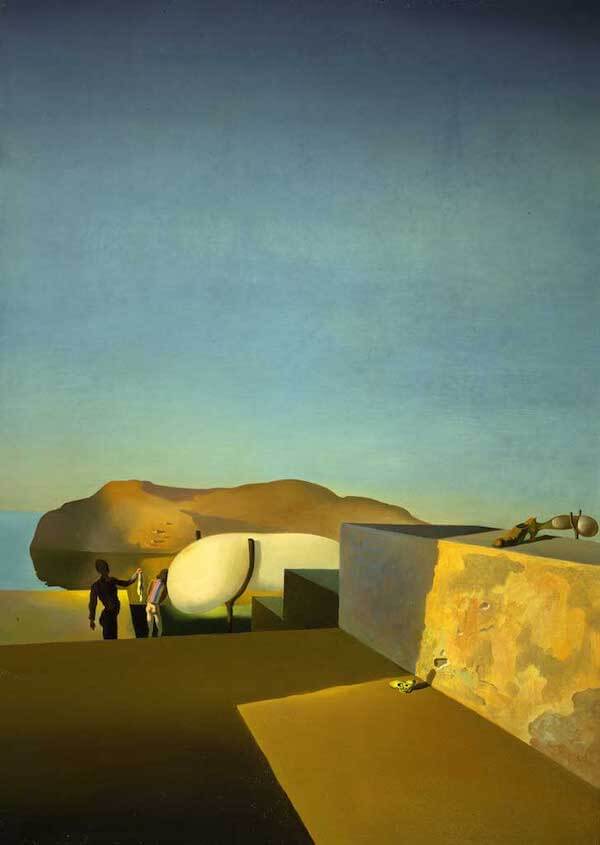Persistence of Fair Weather, 1932 by Salvador Dali

In Persistence of Fair Weather Dali combines several themes that preoccupied him throughout the early 1930s: fetishism and the primal scene, anamorphosis and symbolic death, and abjection and desire. Each concept is in turn symbolically linked to a specific object in the painting: a woman's highheeled shoe sprouting a soft appendage supported by a crutch, a distorted skull in the foreground, and, also supported by a crutch, a second bulbous form that is related to the image of the hydrocephalic bureaucrat. In the background a seminude Gala, identified by her jacket, hides her face in the same gesture of shame that Dali frequently used to communicate Oedipal guilt, while a haunting male specter holds what appears to be Gala's undergarment in his left hand.
The crutches that support the two bulbous masses offer some clues to the meaning of this enigmatic painting. As early as 1920s, Dali explored the idea of a symbolic armature for his figure, who, like a cardboard cutout, is supported by dowels. It was not, however, until 1932 that the crutch became a leitmotif in Dali's art. In his The Secret Life Dali described the crutch as a symbolic support:
I inaugurated the 'pathetic crutch', the prop of the first crime of my childhood, as the all-powerful, and exclusivist post-war symbol - crutches to support the monstrous development of certain atmospheric-cephalic skulls, crutches to immobilize the ecstasy of certain attitudes of rare elegance, crutches to make architectural and durable the fugitive pose of a choreographic leap, to pin the ephemeral butterfly of the dancer with pins that would keep her poised for eternity























